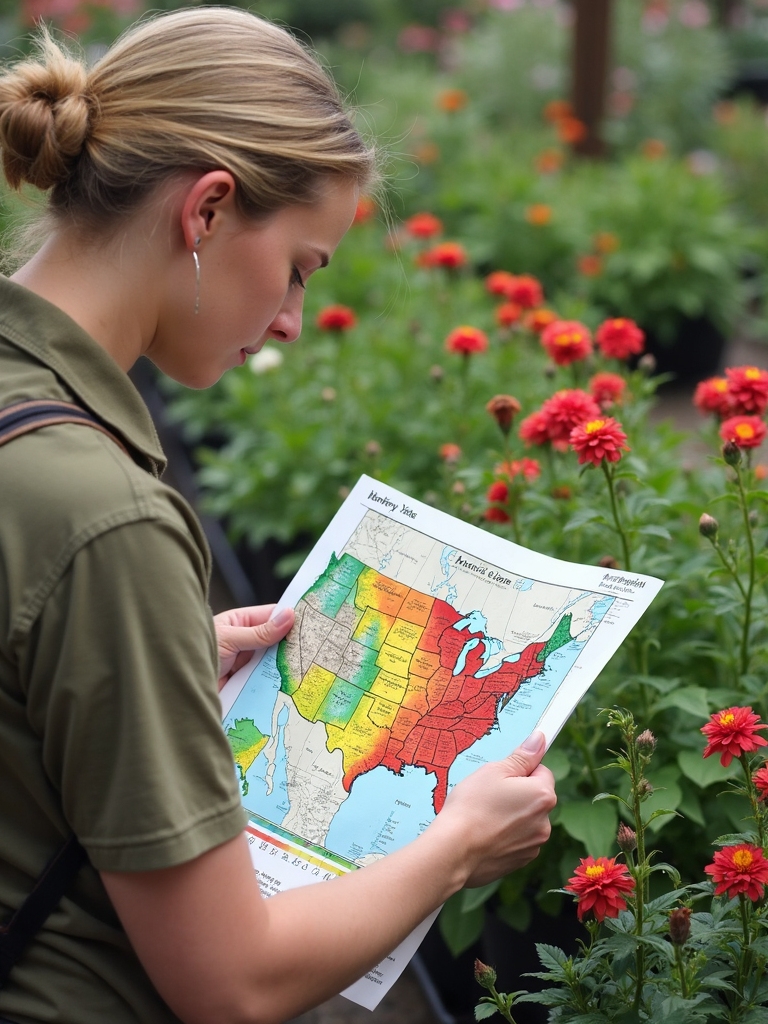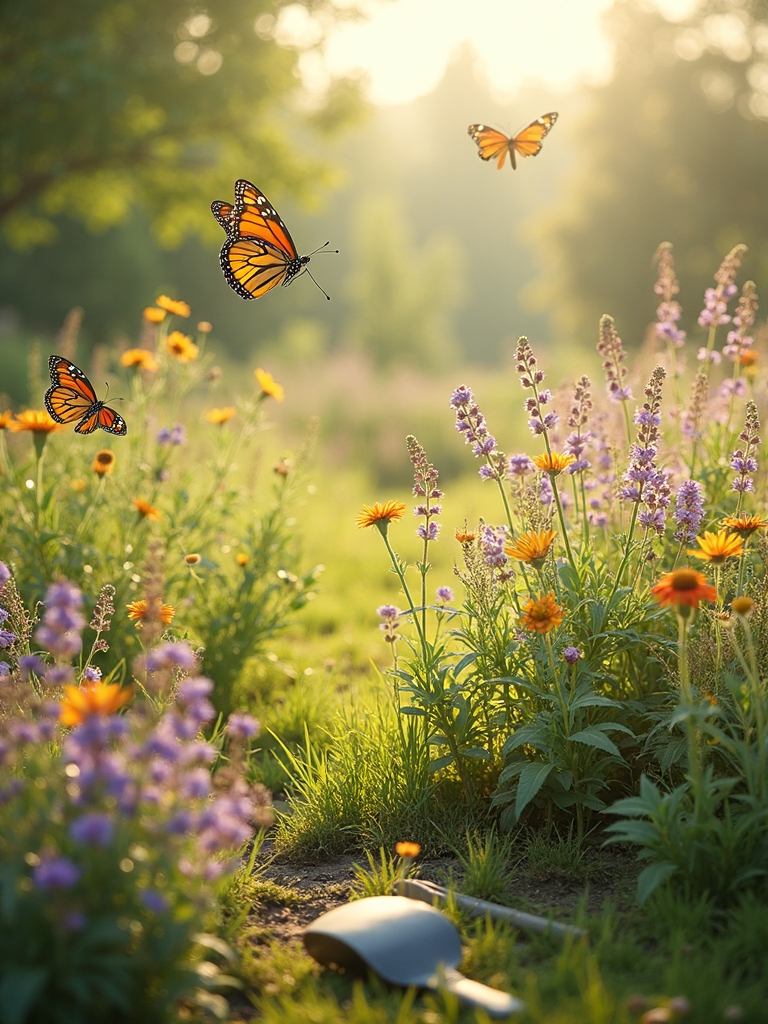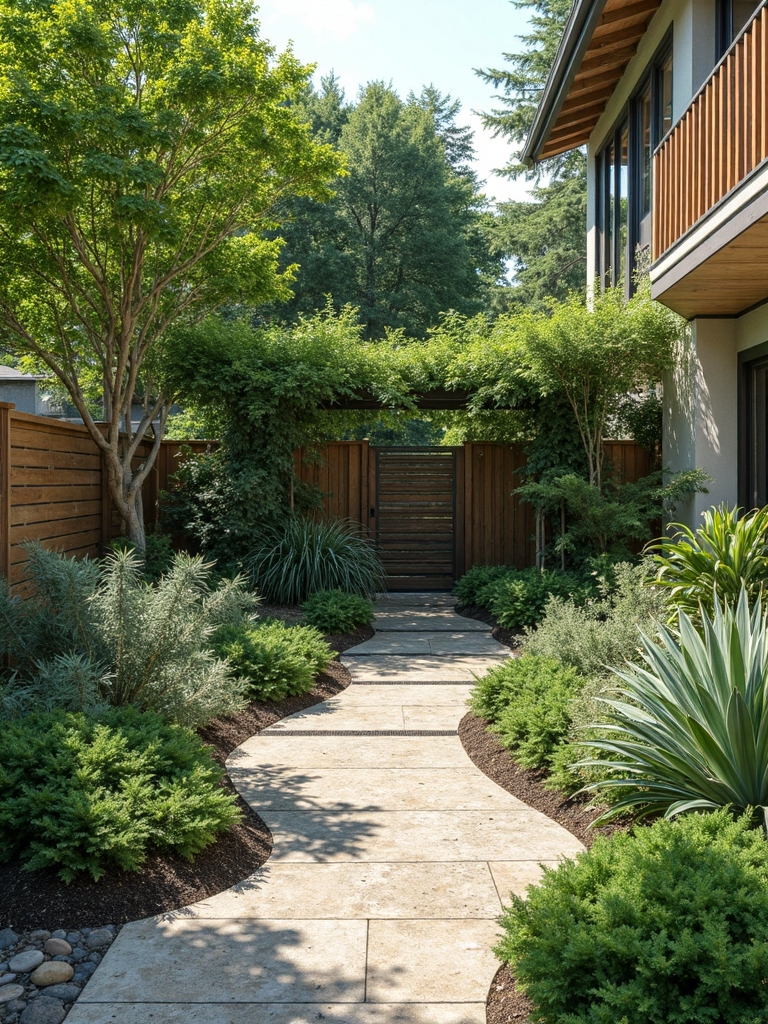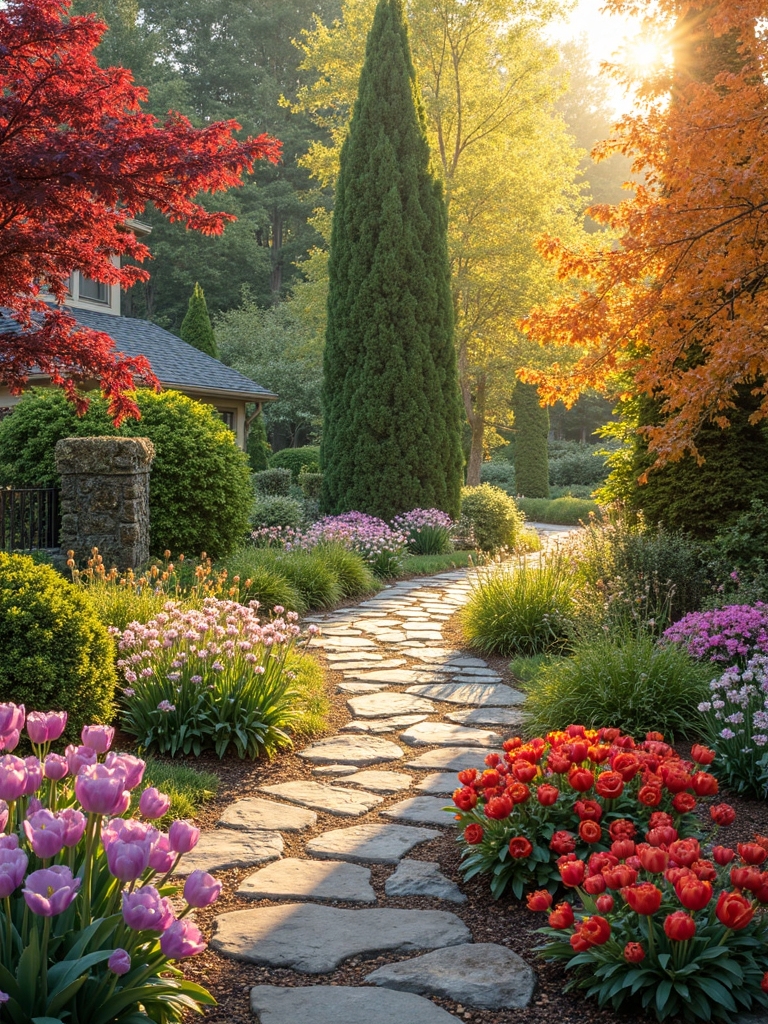Starting your first garden feels like standing at the base of a mountain—exciting but a bit overwhelming! I’ve been there too, staring at hundreds of seed packets wondering, “Will these even grow here?” You’re not alone. The right plants can mean the difference between a thriving garden that brings you joy and one that leaves you frustrated. Before you grab those pretty flowers that caught your eye, there’s some key groundwork that’ll save you time, money, and heartache down the road.
How to Choose the Right Plants for Your First Garden

How exactly do you begin choosing plants when you’re staring at hundreds of colorful options at the garden center? I always start by considering two essential factors: sun exposure and hardiness zone.
Trust me, you’ll thank yourself later for selecting drought-tolerant varieties that match your specific climate.
Understand Your Garden’s Hardiness Zone

Before diving into plant selection, you’ll need to figure out your garden’s hardiness zone. This simple number system, created for North America, tells you which plants can survive your local winter temperatures. I always check my zone before shopping—it’s like knowing your shoe size before buying sneakers!
Find your hardiness zone online through the USDA map or at local garden centers.
Assess Your Garden’s Sunlight Patterns

Now that you know your hardiness zone, let’s talk about sunshine—your garden’s most precious resource!
Watch your yard throughout the day to see where sun bathes your soil. Is it full sun (6+ hours), partial, or mostly shade? Don’t forget, the sun’s path changes with seasons! Those shadows from your fence or maple tree create mini-climates that’ll make or break your plant choices. Match each plant’s sun exposure needs to your garden’s reality.
Evaluate Your Soil Type and Conditions

Getting your hands dirty (literally!) is the next crucial step in your gardening odyssey. I’m always amazed how ground conditions in urban areas vary!
Grab a handful of soil—is it sandy, clay-like, or perfectly loamy? Test the pH and nutrient levels too. When selecting site conditions to keep plants happy, don’t forget to check moisture levels. Your soil tells a story!
Consider Water Availability and Drainage

Nearly every successful garden depends on understanding your water situation! I’ve learned that selecting the Right Plants means matching them to your garden’s moisture levels. Group plants with similar thirst levels together, and you’ll save yourself headaches later!
If your yard is dry, drought-tolerant varieties will become your best friends. Don’t forget to add compost—it’s like a moisture-regulating sponge for your soil!
Determine Annual vs. Perennial Plant Selection

Understanding the difference between annuals and perennials might be the most meaningful choice you’ll make for your garden’s long-term success!
I always tell new gardeners that annuals are like summer flings—they’ll captivate you for one season then say goodbye. Perennials, though, are your garden’s loyal friends who return year after year.
Mix both to create a garden that’s both vibrant and dependable!
Measure and Plan for Mature Plant Size

While most novice gardeners focus solely on flower colors and sun requirements, I’ve learned the hard way that planning for mature plant size is absolutely critical!
When making your plant selection, always check the expected height and width. You’ll save yourself so much trouble! That ‘adorable’ shrub might become a 10-foot monster, completely overwhelming your space.
Remember: right plant, right place means considering growth rate too. Trust me—your future self will thank you!
Select Native Plants for Low-Maintenance Success

Now that you’re thinking about sizing plants correctly, let’s focus on a secret weapon for first-time gardening success: native plants!
These local heroes are perfectly adapted to your soil and climate, needing considerably less water and maintenance than exotic imports. Their deep roots stabilize soil while attracting beautiful pollinators.
Try purple coneflower or black-eyed Susan—they’ll thrive while you barely lift a finger!
Identify Your Garden’s Microclimates

Even as you plan your first garden with native plants, you’ll soon uncover that your yard isn’t just one environment—it’s several!
Look closely at your site conditions to keep track of sun and shade patterns throughout the day. That sunny corner might actually be perfect for shade-lovers by afternoon. I’ve found that observing wind exposure and proximity to structures helps me match plants to their ideal microclimate. Your garden’s success depends on this detective work!
Choose Disease and Pest-Resistant Varieties

Why struggle with plant problems when you can prevent them from the start? When selecting plants for your garden, look for varieties with natural resistance to common local pests and diseases. Heritage™ river birch, for instance, fights off bronze birch borer better than European varieties.
I’ve found drought-tolerant options like Abies and Hibiscus stay healthier with less fuss. Your future self will thank you!
Match Plants to Available Maintenance Time

The biggest mistake I see new gardeners make is choosing gorgeous plants that demand more time than they can give. Be honest about your schedule!
When selecting plants available at nurseries, keep in mind your real-life availability. Succulents and native perennials will forgive your weekend getaways, while fussy annuals and vegetables might throw a tantrum if you skip their daily care routine.
Plan for Seasonal Interest Throughout the Year

A well-designed garden delivers year-round joy when you thoughtfully select plants with different peak moments. Combine spring bloomers like daffodils with summer daylilies and fall asters for continuous color. Don’t forget evergreens for winter structure!
I’ve found ornamental grasses to be garden workhorses—they look gorgeous in every season. Japanese maples add that wow factor with their stunning foliage changes.
Frequently Asked Questions
How to Select Plants for Your Garden?
When selecting plants for your garden, start by determining sun and soil requirements for your space. Consider plant growth habits to guarantee they’ll fit properly. Choose native species that’ll thrive with minimal maintenance in your conditions.
What Is the Rule of 3 in Gardening?
The rule of 3 combines trees, shrubs, and perennials to create balanced gardens. When you’re spacing plants, consider their mature sizes. You’ll need proper soil preparation techniques for each plant type to thrive together harmoniously.
What Is a Good Garden Layout for a Beginner?
You’ll want a simple, symmetrical layout for your first garden. Consider your garden’s location—assess shade vs. sun requirements. Group plants with similar needs together, include open spaces, and create a focal point for visual interest.
How Should I Arrange Plants in My Garden?
Group your plants in odd numbers, placing taller varieties in back. You’ll create depth through plant height variations while color coordination enhances visual appeal. Don’t forget to account for mature sizes to prevent overcrowding.
Conclusion
Remember, your first garden is an expedition, not a race! By understanding your zone, sunlight, and soil, you’ll set yourself up for success. Don’t worry about perfection—even experienced gardeners learn through trial and error. Start with a few reliable plants that match your conditions and maintenance time, then expand as you gain confidence. Soon you’ll be showing off your green thumb and enjoying the fruits (or flowers!) of your labor.
